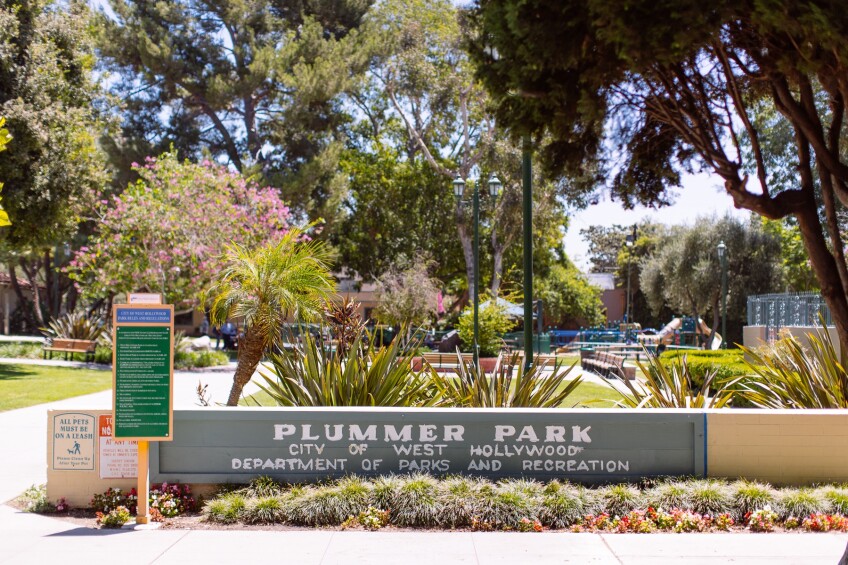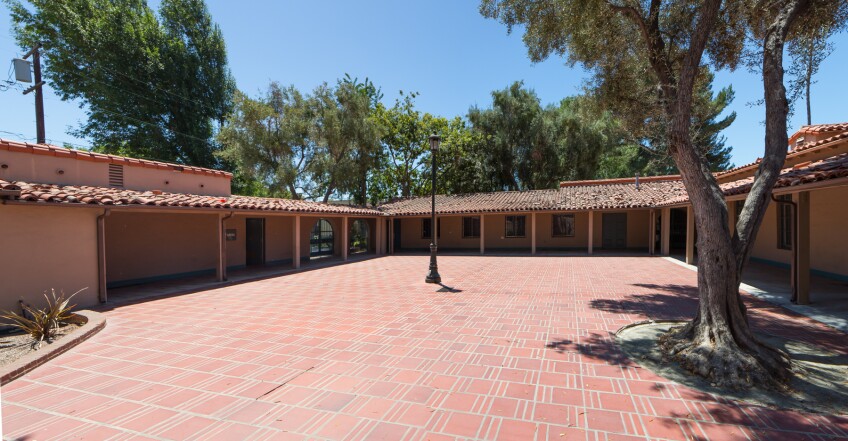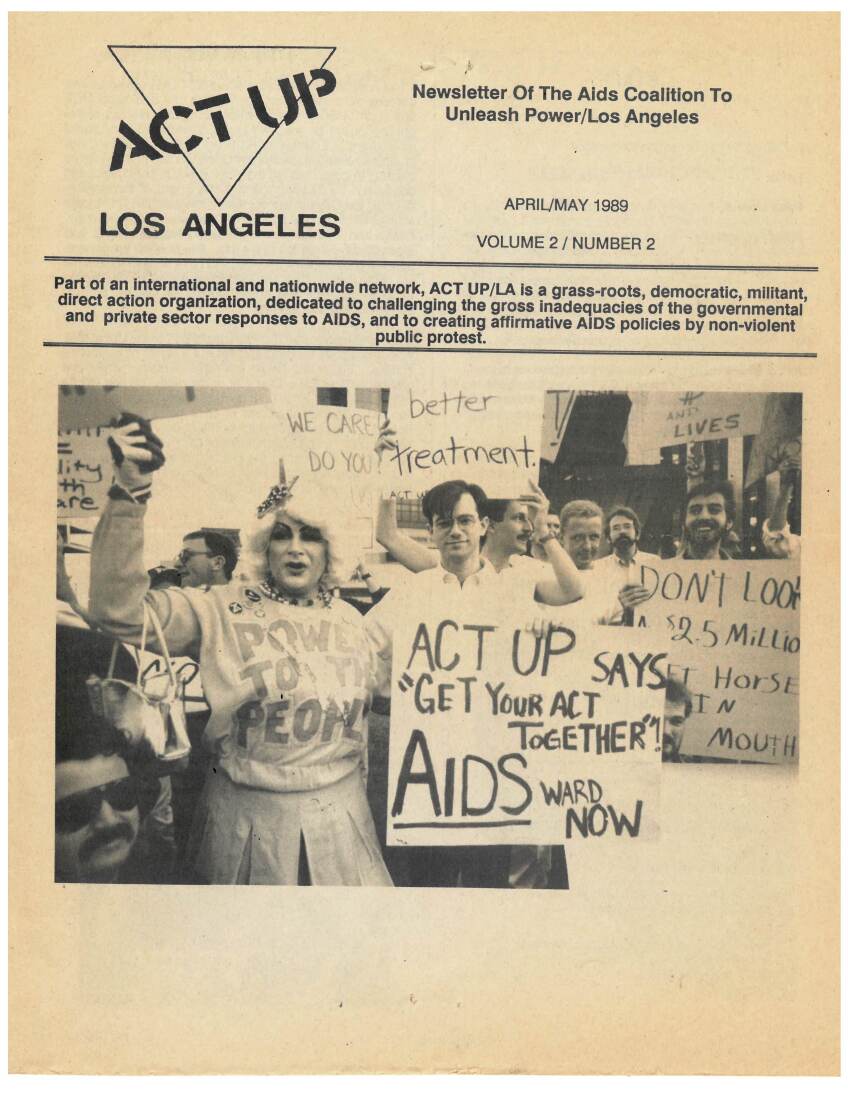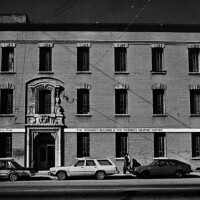West Hollywood's Plummer Park and Great Hall/Long Hall: Landmarks of HIV/AIDS Activism


Films from "Curating the City: LGBTQ Historic Places in L.A." are produced by FORM followsFUNCTION and presented in partnership with the Los Angeles Conservancy: The Los Angeles Conservancy preserves the historic places that make Greater Los Angeles unique. They work through education and advocacy to raise awareness of our shared cultural heritage, prevent the needless destruction of significant sites and historic neighborhoods, empower people to save the places they love, and foster strong preservation laws and incentives.
A private, member-based nonprofit, the Conservancy works throughout L.A. County, spanning 88 cities as well as unincorporated areas.
The proposed demolition of the Los Angeles Central Library led to the Conservancy’s founding in 1978. What started as a handful of concerned citizens is now the largest local preservation group in the U.S., with more than 6,000 member households and hundreds of volunteers.
Completed in 1938, Plummer Park and its Great Hall/Long Hall reveal essential layers in West Hollywood’s development and identity, from its New Deal origins to its role in LGBTQ community organizing.
Decades after its construction, at the height of the HIV/AIDS epidemic in the 1980s and ’90s, the facility in Plummer Park hosted meetings of the local chapter of the prominent advocacy group ACT UP (AIDS Coalition to Unleash Power), serving as the backdrop to unprecedented campaigns for greater visibility and more effective treatment. The group was instrumental in compelling the federal government to respond to the HIV/AIDS crisis through new research and healthcare programs.
The construction of Plummer Park, however, predates West Hollywood’s incorporation as a city and its association with the LGBTQ community. In partnership with the Works Progress Administration (WPA), the County of Los Angeles dedicated the four-acre park in 1938 as part of countywide efforts to expand park space during the Great Depression. Formerly the homestead of Captain Eugene Plummer, the property was the last remnant of the pioneer family’s vast Rancho La Brea. The Great Hall/Long Hall, previously known as the Plummer Park Community Clubhouse, is the only structure in West Hollywood built through New Deal programs.
Its Spanish Colonial Revival design, chosen to reflect Plummer Park’s heritage and link to the region’s great Mexican-era ranchos, remains highly intact. It features a U-shaped plan surrounding a central courtyard, a clay tile roof, and a stucco exterior. The west section, known as the Great Hall, features an auditorium space, while the south section, known as the Long Hall, originally functioned as a library and game room. The interior retains its original stage, decorative wood trusses, beams, and molding.




The facility remains an active part of community life in West Hollywood. The Los Angeles Audubon Society occupied space in Great Hall for many years, with a library, bookstore, and office space, while the community’s Russian Library occupied space in Long Hall. The facility continues to host public events, theatre productions, and community meetings.
The 1980s ushered in a new era for both the community and Plummer Park. In 1984, when West Hollywood incorporated as a municipality, Plummer Park and all of its structures were transferred from county ownership and operation to the new city.
At the same time, the scope of the emerging HIV/AIDS epidemic was setting in across the nation, and the LGBTQ community found itself both disproportionately affected by the newly identified disease and facing new discrimination in seeking effective treatments.
Plummer Park and Great Hall/Long Hall would play a prominent local role in the national discussion on HIV/AIDS healthcare during the 1980s and ’90s, adding a new layer of history associated with the LGBTQ community to the park and clubhouse.
The international advocacy group AIDS Coalition to Unleash Power, better known by its acronym ACT UP, was formed in New York in March 1987. The organization’s motto, “Silence = Death,” was a powerful summation of the necessity for direct action to effect institutional change.
The Los Angeles chapter of ACT UP (ACT UP/LA) was founded nine months later, on Dec. 4, 1987. The chapter met for the first time in West Hollywood, which has long been home to one of the largest LGBTQ communities in Los Angeles County.
The density of the city’s LGBTQ community and the proximity and availability of Plummer Park made the park an ideal location for the meetings of ACT UP. Speaking on the impact of the Great Hall/Long Hall as a community gathering place, Helene Schpak, one of the original advocates involved in the Los Angeles Chapter of ACT UP, reflects: “It’s so important to have a meeting space like this that people could come to and have discussions and try to effect positive change as well.”
ACT UP/LA met at Plummer Park from 1987 through 1996, organizing a number of prominent campaigns as part of a broad coalition of progressive organizations. Members sought to draw media attention to the HIV/AIDS epidemic through nonviolent action, including candlelight vigils and “die-ins” in Westwood Village; civil disobedience outside local Food and Drug Administration (FDA) offices and the Federal Building in Westwood; and a week-long vigil at Los Angeles County+USC Medical Center. The 1989 action at the Medical Center, then known simply as Los Angeles County Hospital, ultimately resulted in the creation of a dedicated AIDS unit at the facility. Activists, many of whom were afflicted with HIV or AIDS, staged a mock AIDS ward outside of the hospital, complete with cots, tents, and a soup kitchen.



Kevin Farrell, an early ACT UP/LA member, recalled the importance of the group’s activism. “We had to affect policy somehow to make a change on a larger level for more people,” he said. “And that’s what led a lot of us to this, I think, is the personal experience of having either ourselves be sick or our friends be sick and dying and nobody at any level appearing to care one whit about it.”
Nationally, ACT UP actions brought about the transformation of the FDA medication trial and approval processes, expanded AIDS healthcare services including those for women and prisoners, and challenged immigration and naturalization policies.
Great Hall/Long Hall in Plummer Park played a significant role in ACT UP’s nationwide campaigns and is indisputably an important landmark associated with West Hollywood's LGBTQ community and activism. Nevertheless, these layers of recent history, dating back to the mid-1980s, are often overlooked.
While the clubhouse was listed in the National Register of Historic Places in 2013, it was nominated not for its association with the LGBTQ community and ACT UP/LA, which reflect its more recent heritage. Rather, it was listed solely for its association with the Works Progress Administration and as an excellent example of Spanish Colonial Revival architecture.
Demolition proposals place the site at risk of disappearing before its full history can be confronted and understood in a contemporary landscape.
Plummer Park’s connection to the history of the HIV/AIDS epidemic in Los Angeles may trigger painful memories and associations for community members, making it difficult to memorialize. In recent years, the City of West Hollywood has sought to redevelop the park, specifically calling for the destruction of Great Hall/Long Hall. This effort places the site at risk of disappearing before its full history can be confronted and understood in a contemporary landscape.
Nonetheless, preserving Plummer Park’s Great Hall/Long Hall presents a powerful opportunity to honor the people whose stories and struggles are embedded in these physical structures and landscapes. Helen Schpak sums up the significance of Great Hall/Long Hall, reflecting, “History was made here, period.”


